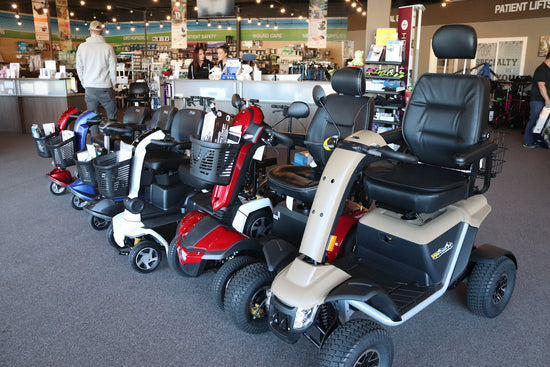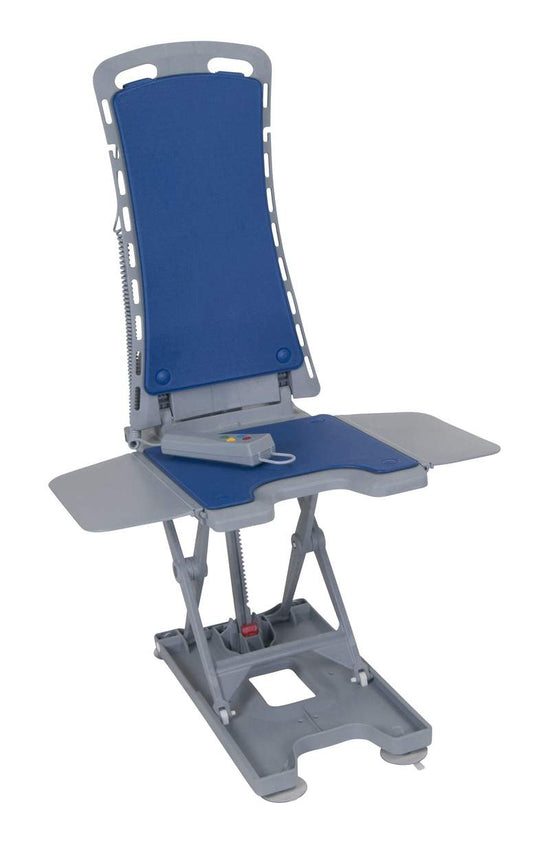Proper maintenance of medical supplies is crucial for ensuring their longevity and effectiveness. By taking the time to care for your equipment and supplies, you can reduce the frequency of replacements, save on costs, and maintain optimal health and safety standards.
This article will provide you with practical tips and best practices for extending the life of your medical supplies. From routine cleaning to proper storage techniques, we'll guide you through essential maintenance steps that can help you get the most out of your medical investments.
The Importance of Medical Supply Maintenance
Proper maintenance of medical supplies is crucial not only for extending their lifespan but also for ensuring the safety and effectiveness of the equipment. Regular maintenance helps prevent unexpected failures that could compromise patient care and lead to costly replacements.
One of the main reasons for maintaining medical supplies is hygiene. Routine cleaning and sterilization reduce the risk of infections and contamination, ensuring that all medical tools remain safe for use. For example, items like syringes, catheters, and wound dressings must be kept in sterile conditions to prevent complications.
Additionally, regular inspections and servicing help identify wear and tear early. This proactive approach allows for timely repairs or replacements, minimizing downtime and ensuring that the equipment is always ready for use. For instance, monitoring the integrity of oxygen tanks and ensuring that wheelchairs are functioning correctly can prevent accidents and ensure continuous support for the users.
Adhering to manufacturer guidelines for maintenance is also essential. Each medical device comes with specific instructions for cleaning, storage, and handling. Following these recommendations not only ensures the longevity of the supplies but also maintains their warranty.
Routine Cleaning and Sanitation Practices
Routine cleaning and sanitation practices are fundamental to extending the life of your medical supplies and ensuring their safe and effective use. Regular maintenance not only prevents contamination but also enhances the durability and functionality of medical equipment.
Start by understanding the specific cleaning requirements for each type of medical supply. For instance, reusable items like surgical instruments, stethoscopes, and thermometers often come with manufacturer guidelines that detail the appropriate cleaning agents and methods. Adhering to these instructions is crucial to avoid damaging the equipment and voiding warranties.
Daily cleaning should include wiping down surfaces with approved disinfectants. High-touch items, such as blood pressure cuffs and glucose monitors, should be sanitized after each use to prevent the spread of infections. Use alcohol-based wipes or solutions containing at least 70% isopropyl alcohol, which are effective in killing most pathogens.
For more thorough cleaning, consider using ultrasonic cleaners or autoclaves, especially for instruments that require sterilization. These devices use high-frequency sound waves or steam to remove debris and kill microorganisms. Ensure you follow the proper cycle times and temperatures as recommended by the manufacturer.
Storage also plays a vital role in maintaining hygiene. Keep medical supplies in a clean, dry place, ideally in sealed containers or sterile packaging, to prevent exposure to dust and contaminants.
Lastly, establish a regular inspection routine. Check for signs of wear and tear, such as cracks, discoloration, or residue build-up, and replace items as needed. Maintaining a log of cleaning schedules and inspections can help ensure consistency and accountability.
Proper Storage Techniques for Medical Supplies
Proper storage techniques are essential for extending the life of your medical supplies, ensuring their effectiveness, and maintaining a safe environment. By following appropriate storage practices, you can protect your supplies from damage, contamination, and premature wear.
First and foremost, always store medical supplies in a clean, dry, and temperature-controlled environment. Avoid exposing them to extreme temperatures or humidity, as these conditions can degrade materials and compromise the integrity of the supplies. For example, sterilized items should be kept in their original packaging and stored in a cool, dry place to maintain sterility.
Organize your storage area systematically. Use labeled bins, drawers, and shelves to categorize supplies by type and expiration date. This organization not only makes it easier to find what you need but also helps ensure that older supplies are used first, reducing waste. Implementing a “first in, first out” system can be particularly effective in managing inventory.
Ensure that sensitive items, such as medications and sterile instruments, are stored in sealed containers to prevent exposure to contaminants. For instance, use airtight containers for gauze pads and syringes to keep them free from dust and moisture.
Regularly inspect your storage area for signs of pests, mold, or other potential hazards that could compromise the integrity of your medical supplies. Conduct routine checks to verify that all supplies are within their expiration dates and discard any that are expired or damaged.
Consider the accessibility of your storage solutions. Frequently used items should be stored at an easily reachable height to minimize strain and ensure quick access during emergencies. Additionally, ensure that heavier items are stored at waist level to prevent lifting injuries.
Inspecting and Monitoring Equipment for Wear and Tear
Regularly inspecting and monitoring medical equipment for wear and tear is critical to extending the life of your supplies and ensuring their reliability. Consistent checks can help identify potential issues before they lead to equipment failure, maintaining safety and functionality.
Begin by establishing a routine inspection schedule based on manufacturer recommendations and the frequency of equipment use. For high-use items, such as blood pressure monitors or glucose meters, daily or weekly checks may be necessary. Less frequently used equipment might only require monthly inspections.
During inspections, carefully examine each piece of equipment for visible signs of wear and tear. Look for cracks, frayed wires, rust, or discoloration, which could indicate damage or deterioration. Pay particular attention to moving parts and connectors, as these are often the first to show signs of stress.
Functionality tests are also essential. Regularly test devices to ensure they are operating correctly. For example, calibrate scales and thermometers periodically to confirm their accuracy. Ensure that batteries are charged and replace them as needed to maintain consistent performance.
Document your findings in a maintenance log. Recording inspection dates, observations, and any actions taken can help track the condition of your equipment over time and provide valuable information for future reference.
Address minor issues promptly to prevent them from escalating. For instance, replace worn-out tubing or cracked casings immediately. If you encounter significant problems, consult the manufacturer’s guidelines or contact a professional for repairs.
Stay informed about the lifespan of your equipment. Medical supplies have different expected lifespans based on their usage and care. Knowing when an item is nearing the end of its usability can help you plan for timely replacements.
Creating a Maintenance Schedule
Creating a maintenance schedule is a fundamental step in extending the life of your medical supplies and ensuring their consistent performance. A well-organized schedule helps you keep track of maintenance tasks, prevents oversight, and ensures that your equipment remains in optimal condition.
Start by listing all your medical supplies and categorizing them based on their maintenance needs. High-use items such as blood pressure monitors, glucose meters, and nebulizers require more frequent checks and cleaning compared to less frequently used items like surgical instruments or mobility aids.
Determine the appropriate maintenance frequency for each category. Consult the manufacturer’s guidelines for specific recommendations on cleaning, calibration, and inspection intervals. For instance, daily cleaning may be necessary for devices that come into direct contact with patients, while monthly or quarterly checks might suffice for others.
Create a detailed calendar or spreadsheet to organize your maintenance tasks. Include columns for the type of equipment, specific maintenance actions (such as cleaning, testing, or replacing parts), and the scheduled dates. Set reminders for upcoming tasks to ensure nothing is overlooked.
Incorporate routine checks into your schedule. Daily, weekly, and monthly inspections can help identify signs of wear and tear early. Regularly document the condition of your equipment and any maintenance actions taken. This log will serve as a valuable reference for tracking performance and identifying recurring issues.
Make sure to allocate time for both minor and major maintenance activities. Minor tasks might include wiping down surfaces and checking battery levels, while major tasks could involve deep cleaning, sterilization, or professional servicing.
To streamline the process, consider using digital tools or mobile apps designed for maintenance scheduling. These tools can automate reminders and provide easy access to your maintenance records.
Remember, consistent maintenance is key to maximizing the lifespan and effectiveness of your medical supplies. By creating and adhering to a comprehensive maintenance schedule, you can ensure your equipment is always ready for use.
For more detailed guidance on maintaining your medical supplies, visit Everything Medical. Their expert resources and support can help you develop a robust maintenance routine tailored to your needs.




